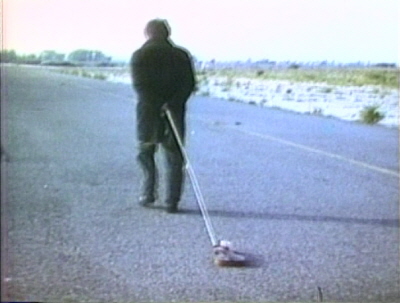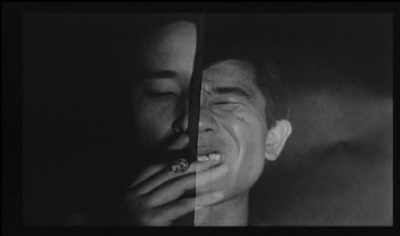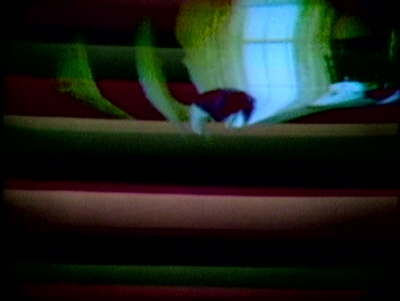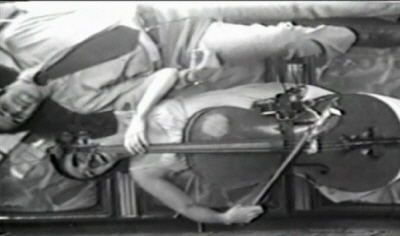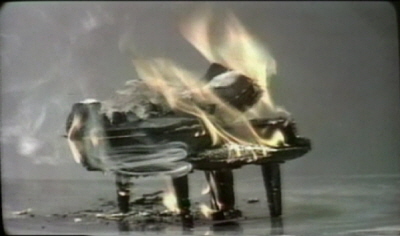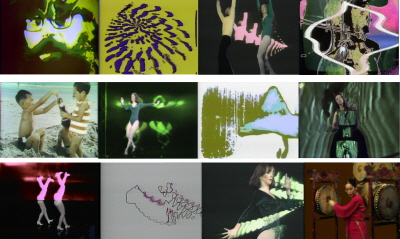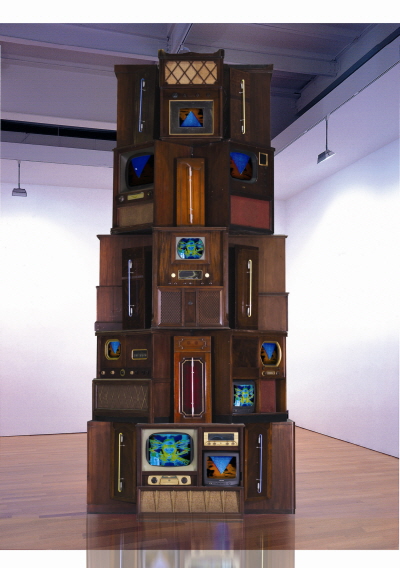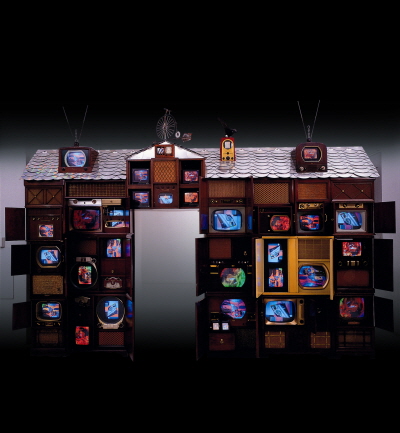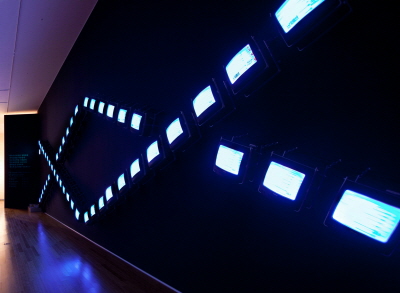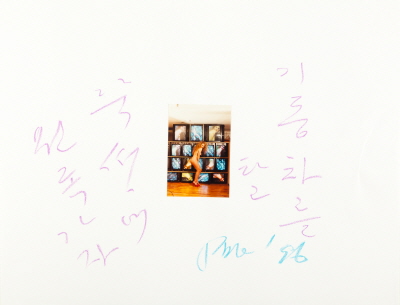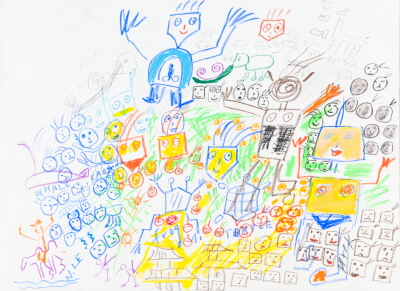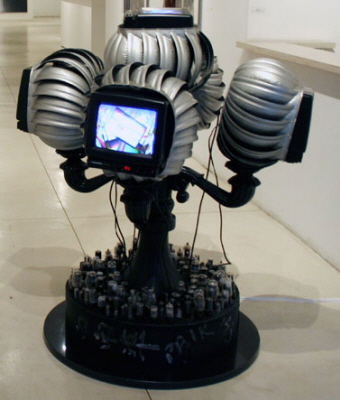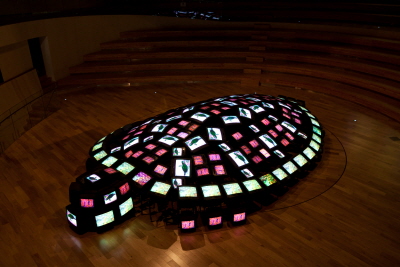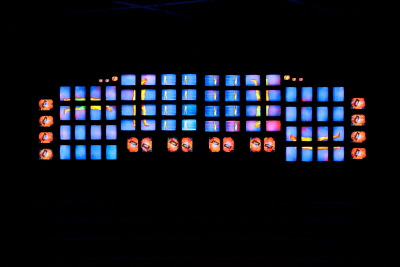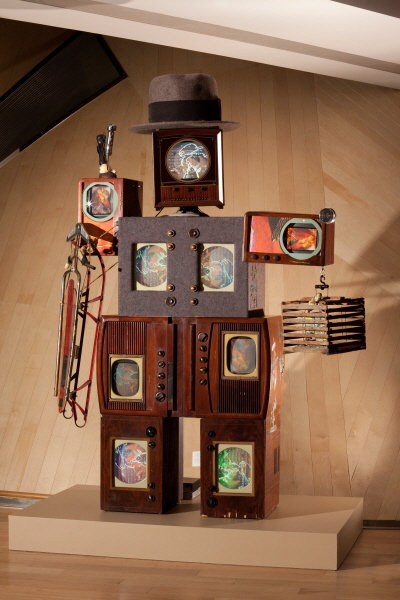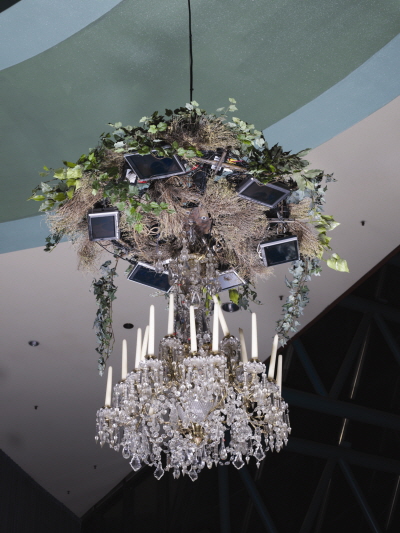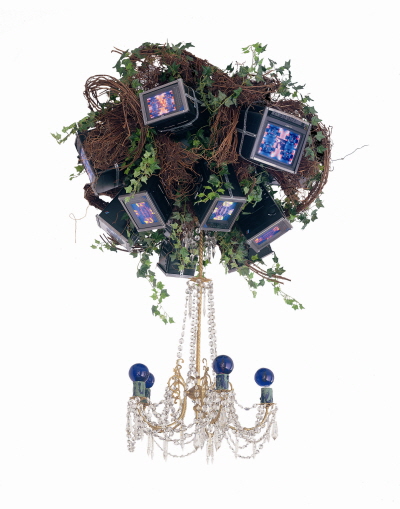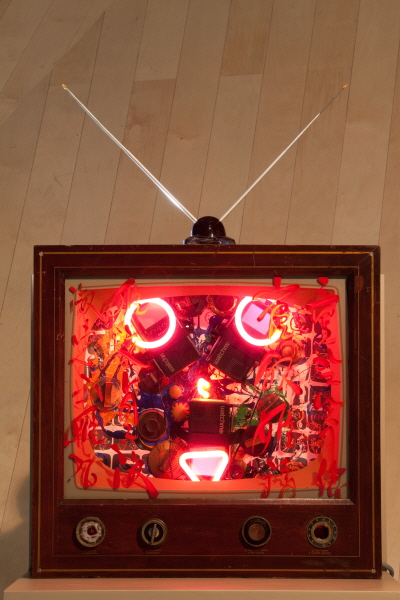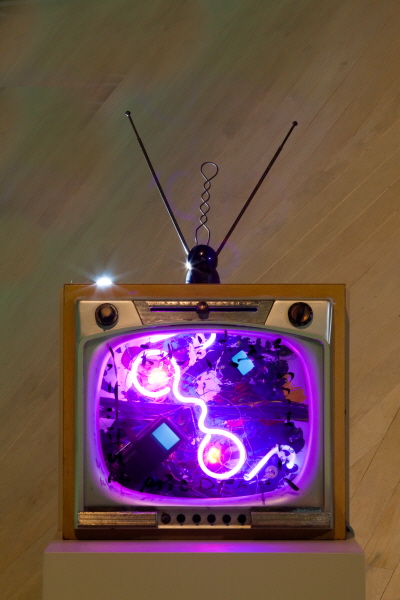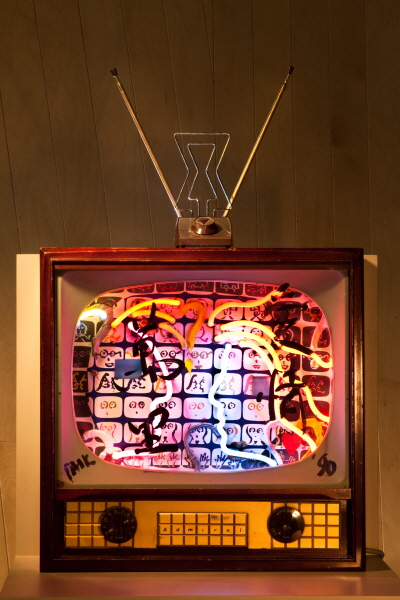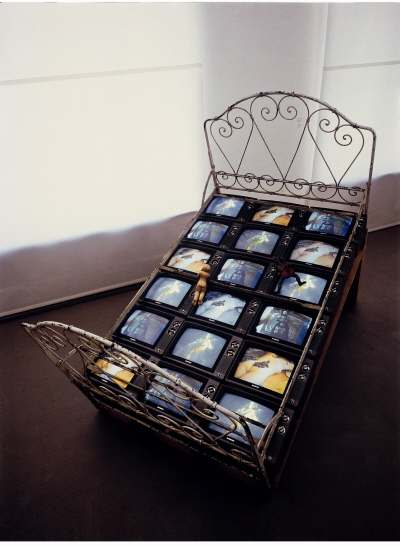과거전시 Past exhibition
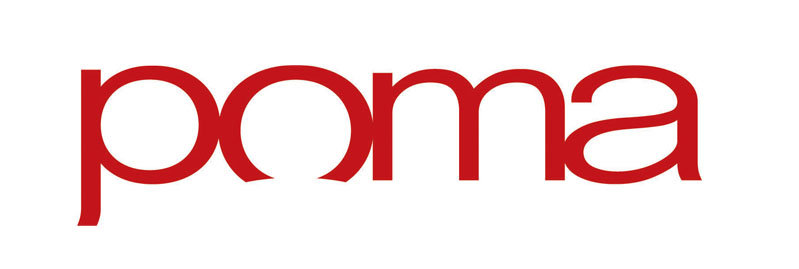
백남준 특별展
- 전시기간 2010-09-09 ~ 2010-11-21
- 전시장소 1, 2전시실 및 로비
- 전시작품 싱글채널비디오, 비디오 조각 및 설치, 사진, 드로잉, 다큐멘터리 비디오 등
- 참여작가 백남준

■ 전시개요
전시제목 : 2010 포항시립미술관 백남준 특별전
텔레토피아 Teletopia - 드로잉에서 레이저까지
전시일시 : 2010년 9월 9일 – 11월 21일 (74일간)
개막일시 : 2010년 9월 9일 오후 4시
전시작품 : 총 156점
싱글채널비디오 9점, 비디오 조각 및 설치 16점, 사진 42점
드로잉 78점
관람시간 : 10:00am–6:00pm
(월요일 휴관, 관람종료 1시간 전까지 입장 가능)
전시장소 : 포항시립미술관
관 람 료 : 무료
도슨트 투어 : 평일(화~금) - 11:00, 15:00
(전시설명회) 주말(토~일) - 11:00, 14:00, 16:00
주최/주관 : 포항시립미술관
후 원 : 포스코, 포항상공회의소, 대구은행, 농협
협 력 : 필로스호텔
기 획 : ㈜ f a z i
초청기획자 : 문인희 아이리스(Inhee Iris Moon)
<텔레토피아 – 드로잉에서 레이저까지>전시는 드로잉에서부터 꼴라주, 퍼포먼스 기록, 비디오 조각, 비디오 설치, 레이저 등 다채로운 작업을 통하여 백남준의 대내적인 관심사와 추구하는 바, 그리고 철학관을 깊고 섬세한 차원에서 보여준다는데 의미를 두고 있다. 전시 제목이자 주제인 ‘텔레토피아(Teletopia)’는 작가의 트레이드 마크라고 할 수 있는 텔레비전(Television)의 ‘텔레(tele, 그리스어로 '멀리'라는 뜻)’와 ‘본다’와 ‘꿈’이라는 의미가 함께 담겨있는 비전(Vision), 그리고 이상적인 사회를 일컫는 유토피아(Utopia)의 ‘토피아(topia)’를 합성한 말로, 예술과 기술, 자연과 인공이 서로 소통되고 조화되는 이상적 사회를 작업에서 보여준 백남준의 예술철학과 비전을 반영한다. “예술가의 역할은 미래를 사유하는 것이다”라는 백남준 자신의 말에서 알 수 있듯이, 작가는 끊임없이 미래에 대해 생각하고 고민하였고, 그를 통해 얻은 자신의 견해를 작업을 통해 표출했다. 현재까지도 유효한 이슈들로서 자연과 테크놀로지의 결합 및 조화, 인간과 기계의 결합, 미디어를 통한 소통 등이 바로 백남준이 꿈꿔왔던 텔레토피아인 것이다.
비디오 아트의 창시자이자 미디어 아트의 아버지인 백남준(1932-2006)은 요셉보이스나 앤디 워홀, 마르셀 뒤샹과 함께 20세기 현대미술의 대표로 알려진 거장이다. 그는 모더니즘 미술에서 포스트모던 미술로 가는 교차점이었던 1960년 초부터 황화(yellow-peril, 황인종이 백인에게 주는 위협)를 두려워했던 시기의 백인들 사이에서 서양의 전유물로 인식되었던 테크놀리지와 미디어를 동양사상, 혹은 더 깊은 의미로 파악하면 한국인으로서 가지고 있었던 원초적 문화와 풍류적 기질을 접목시킨 새로운 미학적 개념과 도발적인 전술을 가지고 그 당시 발생된 다양한 무브먼트의 기동력이자 핵심이 되었다. 백남준은 50여 년의 세월에 걸쳐 매체로서의 TV와 비디오, 미디어와 테크놀리지를 조각, 페인팅, 드로잉, 퍼포먼스, 설치 등 미술의 다양한 카테고리에 접목시켜 예술의 영역을 대폭 확장시키고, 전자 정보 시대와 전자 시각 문화 시대를 살아가는 관객들에게 변화된 예술의 언어와 컨텐츠 그리고 기술을 제공하였다. 그의 비전은 인간과 테크놀리지의 화합, 즉 인공적인 것과 자연적인 것의 유기적 상호작용을 통해 새로운 아름다움을 창출해 내는데 있었고, 과학과 기술이 인류의 진화에 기인하여 창출된 것인 만큼, 자연과 인간이 친화 관계에 있어야 함을 강조하는 것이었다. 남들보다 앞서서 국제화 시대를 살아낸 백남준은 음악, 언어, 소리, 성, 테크놀리지, 미디어, 정치, 사회 그리고 시각적 뿌리라 일컫는 개념들을 다양한 작업으로 표현하였다.
플럭서스, 해프닝, 개념미술, 퍼포먼스 미술과 비디오 아트에 이르기까지 그의 아이디어나 예술 행위에 대한 사고방식, 의향, 철학이 반영되지 않은 분야가 없을 정도로 백남준은 유럽과 미국의 예술이 변화하는 과정에서 청량제이자 침입자의 역할을 동시에 수행하였다. 철학과 더불어 음악사와 작곡을 전공했던 그는, 1959년 존 케이지(John Cage)와의 만남을 전환점으로 음악과 미술, 두 영역을 결합시킨 퍼포먼스로 작가의 길에 오르며 20세기 음악의 진부함을 고발하는 동시에 변화를 주장, 1965년 샬롯 무어맨(Charlotte Moorman)과 함께 <성인만을 위한 소나타 No.1>, <24시간 해프닝>의 해프닝 시리즈로 뉴욕 예술계에 알려지기 시작하였다. 그러던 중 1967년 퍼포먼스 <오페라 섹스트로니크> 중 ‘부적절한 노출’이란 이유로 인해 무어맨과 함께 체포되었다. 그 후 재판에서 이기면서 ‘억압되어있던 예술 표현의 자유를 풀어주었다’는 평을 듣고 퍼포먼스의 예술적 가치를 인정받으며 스타덤에 올랐다. 1973년 뉴욕주 시라큐스 에버슨 미술관에서 첫 회고전을 연 이후, 1982년 미국 휘트니 미술관 개인전과 더불어 첫 위성 프로젝트인 <굿모닝 미스터 오웰>을 통해 일시에 2천 5백만 세계인의 주목을 이끌어 내는데 성공하고, 1986년과 1988년에 두 번째와 세 번째 위성방송 프로젝트를 실현함으로써 본인이 주장하던 ‘테크놀리지를 통한 소통예술’의 중요성을 증명하였다. 1985년에 베니스비엔날레에 첫 번째로 참여하였고, 1993년에 같은 비엔날레에서 영예로운 황금사자상을 획득했으며 1990년에 이르러는 1003대의 모니터를 사용한 <다다익선>이나 47채널 비디오를 313대의 모니터에 실어 보여주는 <일렉트로닉 수퍼 하이웨이>, 166대의 모니터를 사용한 <거북(Turtle)>과 같은 대형설치 작업을 하였고, 2000년 구겐하임 회고전에서
‘드로잉에서 레이저까지’라는 전시의 부제목에서 알 수 있듯이 총 150여 점의 다양하고 수준 높은 작품들로 구성된 이번 전시에서는 <거북>,
■ 초청기획자 문인희 아이리스(Inhee Iris Moon)
The purpose of this exhibition is to show Nam June Paik’s continued interest, his philosophy and pursuit on a deep and delicate level through various works of his drawings, collage, performance records, video sculptures, video installations, and laser installation transformed in a form of video projection. The title as well as the theme of the exhibition, ‘Telotopia’ is synthesized by combining ‘Tele’(in Greek, meaning far) from the word, television, which is considered Paik’s trademark and ‘Topia’ from the word, utopia which means ideal society. Teletopia reflects Paik’s artistic philosophy and vision which is evident when he portrayed in his works the ideal society based on communication and harmony between art and technology, and nature and humanity. As can be inferred from his saying, “the role of artist is to contemplate the future,” Nam June Paik thought and contemplated endlessly about the future and expressed through his works the opinions that he obtained. The important issues he dealt with such as the combination and harmony of nature and technology, relationship between human and machines, and media communications, are still valid today. This precisely is the world of Teletopia that Nam June Paik dreamed of.
As the sub-title, ‘from drawing to laser’, suggests, the exhibition showcases great many 156 excellent artworks. They consist of 16 large-scale video installation works such as
This exhibition revives the Teletopia that Nam June Paik so passionately pursued and the viewers can experience the artist’s rich body of works displayed in 7 different spaces, subtitled, ‘Continuum’, ‘Phantasma’, ‘Teletopia’, ‘Originale’, ‘Performance Path’, ‘Kaleidoscopic view point’, and ‘Electronic Sublime’. The viewers enter the exhibition hall and climb the stairs to the second floor and it’s there they begin viewing the exhibition. Between the elevator and the exhibition room 2 on the second floor, 2 works, a video sculpture,
In the corridor that leads to the balcony on the second floor, the viewers will come across the records of Nam June Paik’s achievements in the form of performance pictures of him taken by photographer, Young Gyun Lim and the essays written by the exhibition curator. On the balcony, the viewers can enjoy 4
The Nam June Paik Special Exhibition
Guest Curator Inhee Iris Moon
작품 더 보기
-
X
작품명: Button Happning
작가명: 백남준
재료: Single Channel Video
사이즈:
제작년도: 1965
-
X
작품명: Violin Dragging
작가명: 백남준
재료: Single Channel Video
사이즈: (시간) 1`35
제작년도: 1965
-
X
작품명: Cinema Metaphysique
작가명: 백남준
재료: Single Channel Video
사이즈: (시간) 9`39
제작년도: 1967-72
-
X
작품명: Experiment with David Atwood
작가명: 백남준
재료: Single Channel Videos
사이즈: (시간) 80`
제작년도: 1969
-
X
작품명: TV Bad (video)
작가명: 백남준
재료: Single Channel Video
사이즈: (시간) 1`10
제작년도: 1972
-
X
작품명: Electronic Opera #2
작가명: 백남준
재료: Single Channel Video
사이즈: (시간) 7`32
제작년도: 1972
-
X
작품명: Global Groove
작가명: 백남준
재료: Single Channel Video
사이즈: (시간) 28`30
제작년도: 1973
-
X
작품명: Tower
작가명: 백남준
재료: Video Sculptures
사이즈: 475 x 220 x 220cm
제작년도: 2001
-
X
작품명: In-Flux House
작가명: 백남준
재료: Video Sculptures
사이즈: 375 x 540 x 61cm
제작년도: 1993
-
X
작품명: W3
작가명: 백남준
재료: Video Sculptures
사이즈:
제작년도: 1994
-
X
작품명: Collage by Nam June Paik
작가명: 백남준
재료: Photo Collage
사이즈: 74piece
제작년도:
-
X
작품명: Drawings by NamJune Paik
작가명: 백남준
재료: Drawing
사이즈: 5piece
제작년도:
-
X
작품명: Up bush
작가명: 백남준
재료: Video Sculpture and Object
사이즈: 133 x 140 x 140cm
제작년도: 1993
-
X
작품명: 거북(Turtle)
작가명: 백남준
재료: Video Sculpture and Object
사이즈: 150 x 600 x 1000cm
제작년도: 1993
-
X
작품명: M 200
작가명: 백남준
재료: Video Sculptures and Object
사이즈: 330 x 960 x 50cm
제작년도: 1991
-
X
작품명: Beuys-voice
작가명: 백남준
재료: Video Sculpture and Object
사이즈: 265 x 188 x 95cm
제작년도: 1990
-
X
작품명: 비디오 샹들리에 4
작가명: 백남준
재료: Video Sculpture and Object
사이즈: 150 x 150cm
제작년도: 1990
-
X
작품명: 비디오 샹들리에 X
작가명: 백남준
재료: Video Sculpture and Object
사이즈: 150 x 150cm
제작년도: 1991
-
X
작품명: 네온 TV: 22세기 여우
작가명: 백남준
재료: Video Sculpture and Object
사이즈: 63 x 65 x 25cm
제작년도: 1990
-
X
작품명: 네온 TV: 천국과 이승
작가명: 백남준
재료: Video Sculpture and Object
사이즈: 58 x 65 x 28cm
제작년도: 1990
-
X
작품명: 네온 TV: 사랑은 10,000마일
작가명: 백남준
재료: Video Sculpture and Object
사이즈: 60 x 60 x 25cm
제작년도: 1990
-
X
작품명: TV Bed
작가명: 백남준
재료: Video Sculpture and Object
사이즈: 230 x 200 x 150cm
제작년도: 1972-1991




